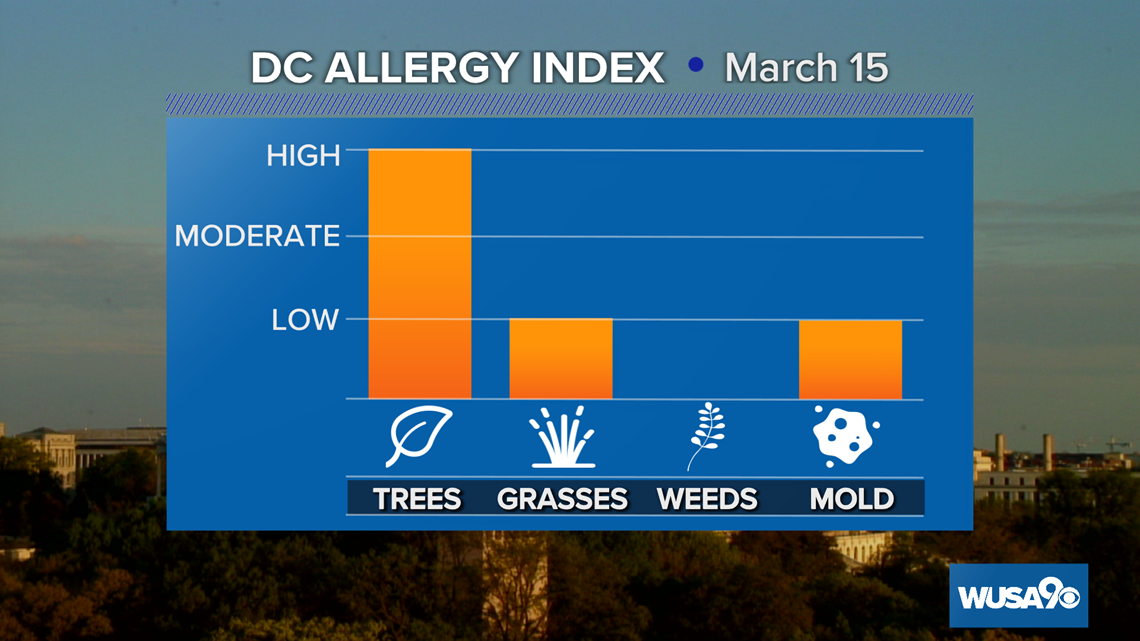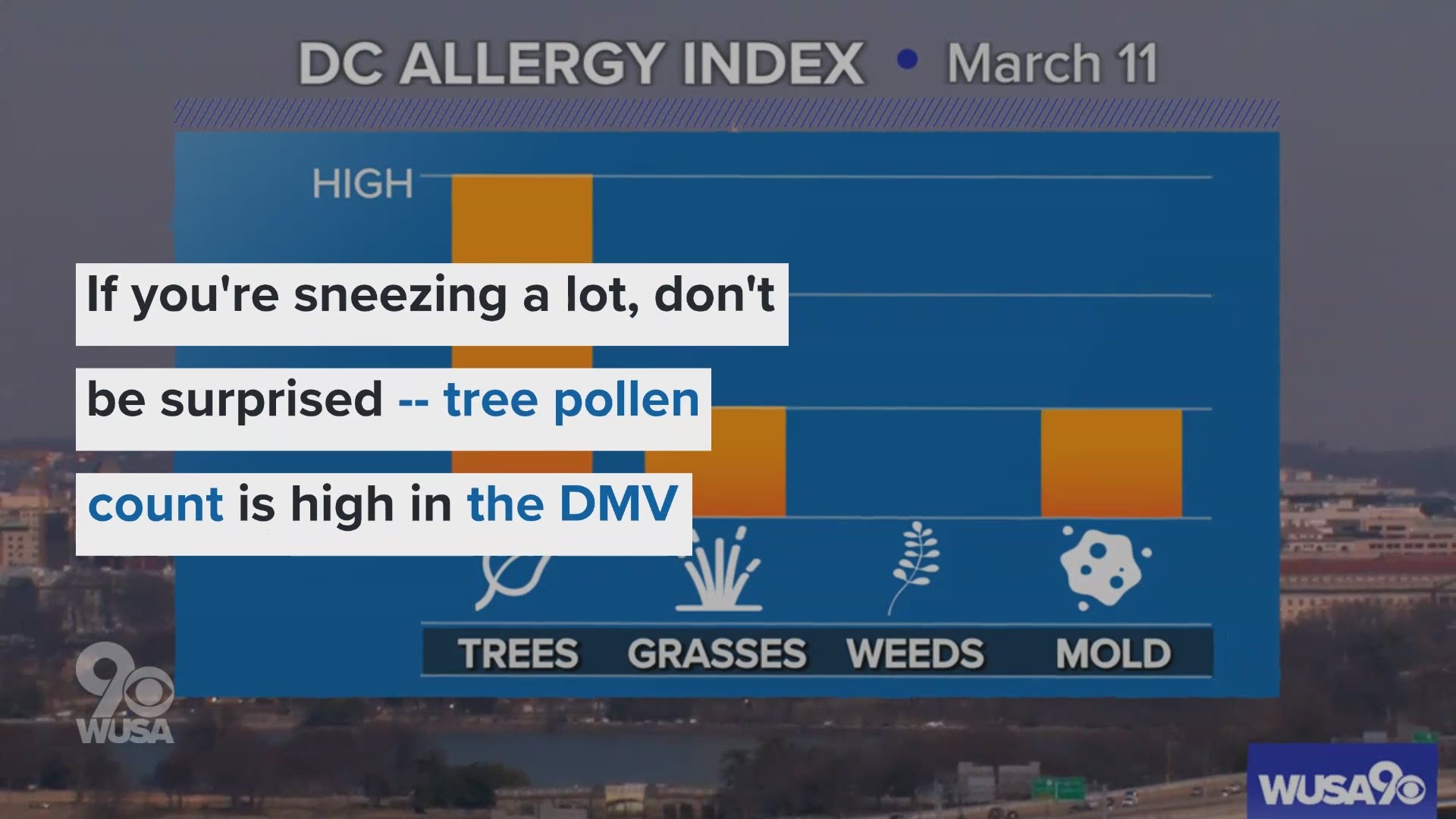WASHINGTON — As much as most of us have enjoyed this stretch of warm weather in the DMV, people with allergies are likely paying a price. The tree pollen count has been higher than usual over the last few days, according to the U.S. Army Centralized Allergen Extract Lab.
The main tree pollen allergens currently are cedar, cypress, juniper, elm, maple and alder.
Tree pollen is VERY HIGH at 1,470.29 grains/cubic meter, grass pollen is LOW at 1.28 grains/cubic meter and mold spores are in the LOW range at 595.47 spores/cubic meter.
This year's pollen season has been off to a slow start but with warmer weather, it's progressing.


Susan Kosisky, the chief microbiologist at the Army's Centralized Allergen Extract Lab, said daily tree pollen averages in January and February were well below average. She said typically by the third week of February, the daily average is 105 grains/cubic meter for tree pollen. This year during that time, thanks to cold weather and bouts of snow and ice, the pollen daily average was 3.2 grains per cubic/meter.
"Our tree pollen counts for February were indicative of the first colder than normal February in six years for [the] D.C. region," Kosisky said.
Highs have been above average the last few days, with temperatures approaching 70 and above in many locations. Trees are very sensitive to warmer weather and have unleashed an abundance of tree pollen as the temperature spiked.
Kosisky said it was so plentiful that you could spot the pollen.
"You could see a light film on the car yesterday," she said. "Some grass pollen was also noted. The count for our pent-up cedar/cypress/juniper family members was very high. Elm, maple and alder also figured predominately into our tree count."
April typically sees a peak in tree pollen. Some of the highest pollen counts between 1998 and 2020 occurred on April 25, 2009, with 4,539 grains/cubic meter and again on April 6, 2010, with 4,174 grains/cubic meter.



